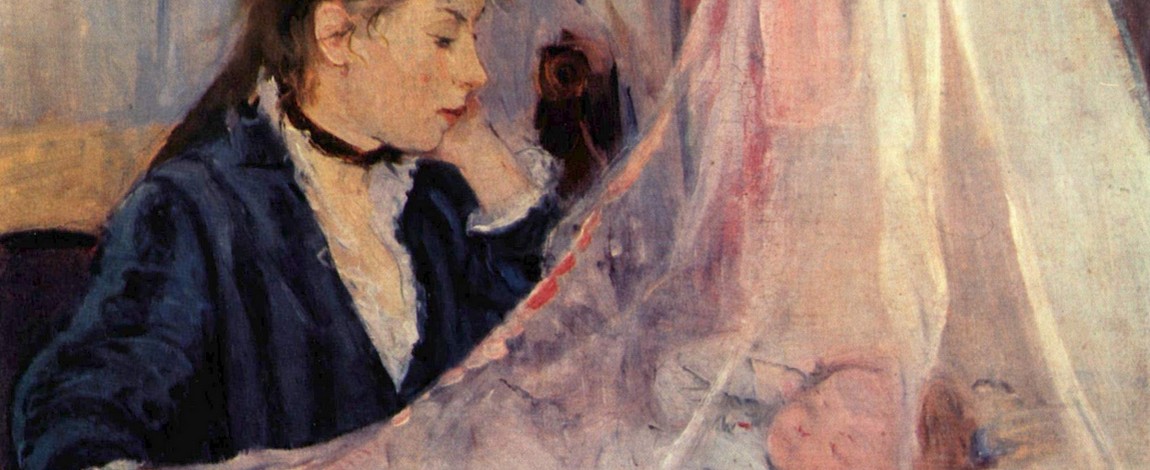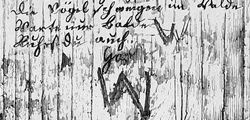
The poet William Blake was also (or above all because he earned his living) an skilled engraver. He developed an engraving technique that enabled him to print his poems, illustrated by himself in colours so that the sheets made all the sense of being “printed manuscripts” (I didn't find the pages corresponding to this week's poem, but you can see, as an example, that of the poem A Poison Tree, which we heard set to music by Benjamin Britten). This technique allowed him to control the entire process of creating and editing the book, since he and his wife Catherine Boucher took care of everything. This way, he prevented publishers from making changes to their poems, which were always complex and often had disconcerting images.
In 1789, he published the first book made this way, Songs of Innocence; later came Songs of Experience, and in 1794 he published both collections together, Songs of Innocence and of Experience Shewing the Two Contraries States of the Human Soul. The poems, as the long title implies, speak of an innocent and vulnerable world, and of an experienced world, more real and cruder, in which life hardens and even perverts souls. In both collections, we often find children: in the first one, as carriers of innocence; in the second, often as victims of the behaviour of adults.
In A Cradle Song, a mother watches over her child's sleep, which is peaceful and calm. Some sources say the poem is in Songs of Innocence, but I couldn't find it. It does appear in some versions of Songs of Experience, but not all. It appears that the print runs that Blake made using his artisanal procedure were very short, of about twenty copies, and it was easy for him to reorder, add, or remove poems. This could explain these differences between editions. In addition, I found A Cradle Song in two different versions. As you can see, it's an evasive poem.
Why would Blake have added this poem to the Songs of Experience, rather than to the Songs of Innocence? Blake’s poems are usually challenging to interpret, but I'll risk making some guesses. Perhaps it is because the creature is no longer a baby, it is old enough to be naughty, and the mother feels that he or she gets older and fears, in some way, what could occur to him or her. The child would be going from innocence to experience. Or it could also be that the mother reflected her own experience on the innocence of the child. It's not unusual that lullabies contain shadows; shadows which, in this case, will fade with daylight. Dear William Blake experts, if you have a more appropriate interpretation of the poem, please share it with us.
Among the songs composed upon A Cradle Song there is that of the composer Rebecca Clarke, from 1929. It is a delicate and transparent song, with impressionistic airs and some dissonances here and there. The first two stanzas repeat the melody, as usually happens with lullabies, but in the other two, it moves away, blurring, as if the music were more for the mother than for the baby. I hope you enjoy it, and you also enjoy the performances of Golda Schultz and Jonathan Ware.
I dedicate this beautiful song to Marina, a baby girl who was born a few weeks ago. I wish her nights of long and sweet dreams, as well as days of discovery and playing pranks. With her parents being musical people, she won't be short of songs, and as she is lucky enough to have an older sister, Alicia, maybe she will sing to her, too. I wish the best to all four of them. Congratulations, dear family!
Sleep, sleep, beauty bright,
Dreaming in the joys of night;
Sleep, sleep; in thy sleep
Little sorrows sit and weep.
Sweet babe, in thy face
Soft desires I can trace,
Secret joys and secret smiles,
Little pretty infant wiles.
As thy softest limbs I feel
Smiles as of the morning steal
O'er thy cheek, and o'er thy breast
Where thy little heart doth rest.
O the cunning wiles that creep
In thy little heart asleep!
When thy little heart doth wake,
Then the dreadful night shall break.


















Comments powered by CComment